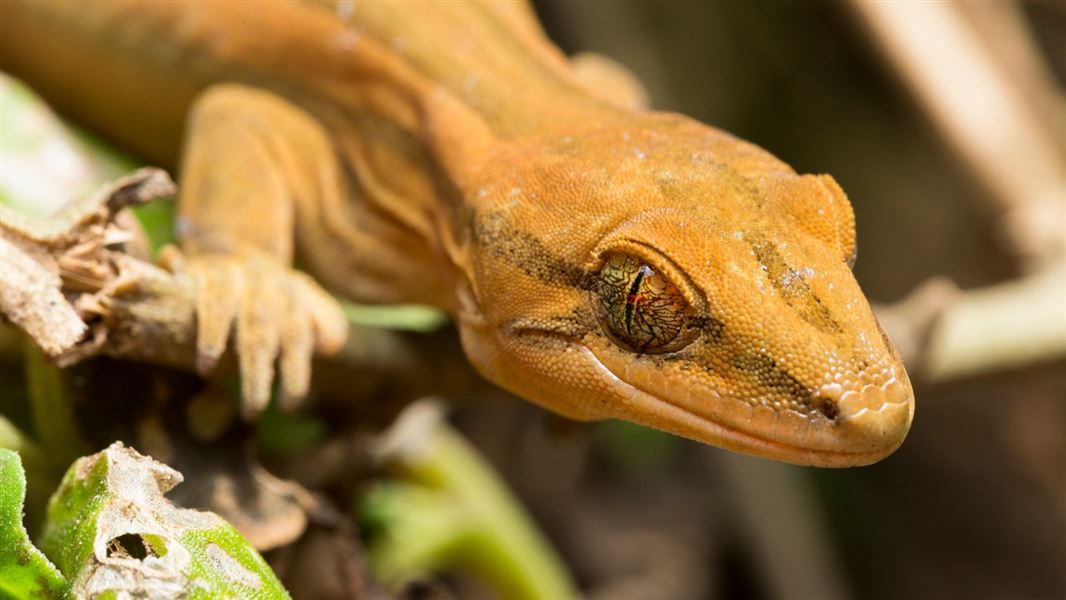The 48 species of gecko in New Zealand are grouped into to seven genera. Genera are groupings of species that share similar characteristics.
New Zealand’s geckos’ genera are:
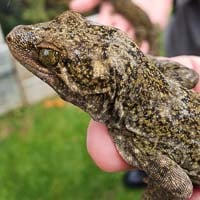
Duvaucel’s gecko (Hoplodactylus)
This gecko is the largest in New Zealand. There are two species within the genus.
Colour
Geckos in this group are mostly grey or grey-brown. They also have subtle mottled patterns and often white spots on their backs.
Habits
Mainly active at night (nocturnal), these geckos live in lowland forests, flax lands and coastal areas. This species is highly vulnerable to predation and disappeared from the mainland soon after the arrival of mammalian predators. They are now restricted to islands free from all mammalian predators.
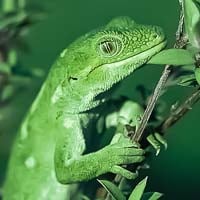
The green geckos (Naultinus)
There are nine species within the genera.Colour
The green geckos are strikingly bright green, but sometimes are bright yellow or have shades of grey or brown. This striking colour is bright but provides excellent camouflage in their habitat. Adult males of some South Island species are grey or brown.
All species within the genus have slender toes and a blue or mauve colour inside their mouths.
Habits
These geckos are active during the day (diurnal). They are found in areas covered in plants and trees, like forests shrublands or alpine herbfields.
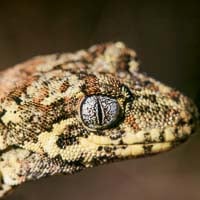
The forest geckos (Mokopiriraku)
There are 13 species within the genera.Colour
Forest geckos can differ a lot in colour. Often, they are grey-brown, olive or greenish with some individuals and species having brighter colours like yellow, orange or pink.
All species within the genus have slender toes and bright orange colours inside their mouths.
Habits
This species group mostly live in forests, usually in the trees. But they can also live in shrublands or rocky areas. Some species seem to stay in alpine areas, where they can live at very high altitudes, between 1,100 and 2,200 metres above sea level.
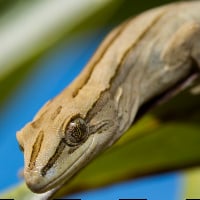
The striped geckos (Toropuku)
Two species are within this genus.Colour
These slender geckos are golden brown with noticeable stripes that run the length of their body.
Habits
Very little is known about where these species live. But we do know that they live in dense forest, fernland, vineland and shrubland.
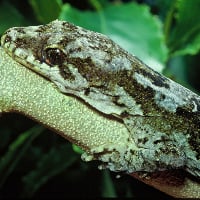
The Pacific geckos (Dactylocnemis)
There are six species within this grouping.Colour
These species vary a lot in colour and pattern. But are generally brown, grey-brown or olive and have slender toes.
Habits
These geckos are only found in the North Island. They occupy a broad range of habitats from boulder beaches to lowland forests.
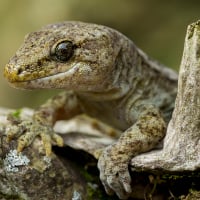
The grey/brown geckos (Woodworthia)
There are 14 species within this genera.Colour
Often brown, grey-brown or olive, these species have many different colours and patterns and broad toes.
Habit
A diverse group, these geckos occupy a wide range of habitats. Some stay in narrow habitats while others occupy very broad ranges. These can include from the coast up into the high alpine zone.
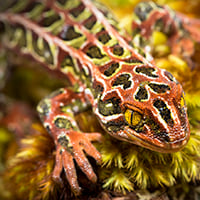
Harlequin gecko (Tukutuku)
This genus has a single species.Colour
The single species within this genus, the harlequin gecko (H. rakiurae), is often brightly coloured. It has a herringbone pattern across most of its body. It is one of the most beautiful of New Zealand’s lizards.
Habits
This species is found in low shrublands and alpine herb fields. They can be active in the day or night when the weather is warm enough.
